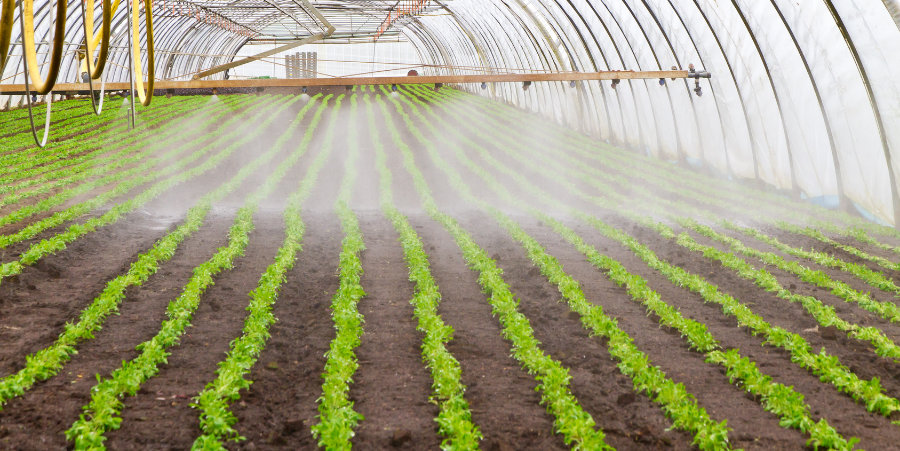Water Enhancement in Agriculture
WDS do not currently sell any off-the-shelf solutions for agriculture, but we do have enough in our toolset to be able to offer custom solutions. Below are a few scenarios to illustrate how we may be able to help you.
Scenario 1: Increasing crop yield, reducing pest and parasite population
The bio-resonance programming that WDS has implemented in the Plant Enhancer Mats demonstrates that the basic concepts of maturation rate and yield abundance can be clearly improved upon. We have also had positive results in attempting to significantly reduce pest problems with bees (varroa mite) and chickens (red mite).
It would therefore be possible to attach a WDS agricultural charger unit to the supply-end of an existing irrigation supply and introduce a custom library of frequencies to:
- Increase crop yield and size
- Reduce parasite and pest
- Reduce incidence of weeds
Scenario 2: Organic farming
It is a sad reality that although organic farming is certainly preferable because it means that we don't need to ingest pesticides and other harmful chemicals, it is also - acre for acre - a method of farming which produces a lower yield density.
Studies by the McGill University in Montreal and also the University of Minnesota demonstrated that the yield from crops grown organically, compared to the conventional approach, can be as much as 34 percent lower.

Lower crop yields are particularly found in grain and vegetable crops. The research has suggested that the difference is partly due to differences in the timing of the fertilizer application: fertilizers rich in Nitrogen are applied on as as-required basis in conventional farming, but in an organic environment the nitrogen/fertilizer is only applied at the start of the growth cycle. This once-only approach has the effect of a slower uptake of nutrient.
In this scenario it would be possible to program the water feed to increase the rate of nitrogen uptake in order to (at least) match that of the conventional cycle.
Scenario 3: Fish and sealife health
An inherent side-effect of fish and sealife farming is that when a large number of organisms share the same space then parasites, bacteria and viruses can thrive and quickly become a widespread and costly problem. Some of the common fish diseases are VHS, ich and whirling disease.
WDS have previously been involved in basic trials to try to reduce the infestation of sea lice in Norwegian salmon farms, and were able to see some promising signs of improvement. We are very keen to continue these trials if suitable funding can be obtained.
Scenario 4: Speed up of sewage treatment
The processing of sewage waste is an organic process in which microbial action is utilised to break down the waste into an environmentally safe fluid waste stream and a solid waste suitable for final disposal or reuse (often as a farm fertilizer). Although the process itself consists of physical, chemical and biological components it seems feasible that the biological function can be enhanced.
Press reports in 2010 told of a German sewage plant where the manager, Detlef Dalichow, discovered that playing Mozart made the sewage-eating micro-organisms perform better, thereby helping to cut costs.
It would be possible with the introduction of WDS water technology to also encourage the health and efficiency of these micro-organisms to achieve this same improvement.
Contact Us
These large-scale agricultural solutions are opportunities of unlimited potential. We are willing to engage in trials of any of the above scenarios, or indeed to consider other possibilities where the same technology solution can be used. Please email us at info@wds-global.com with your requirements or problems and we will be happy to explore a custom solution.